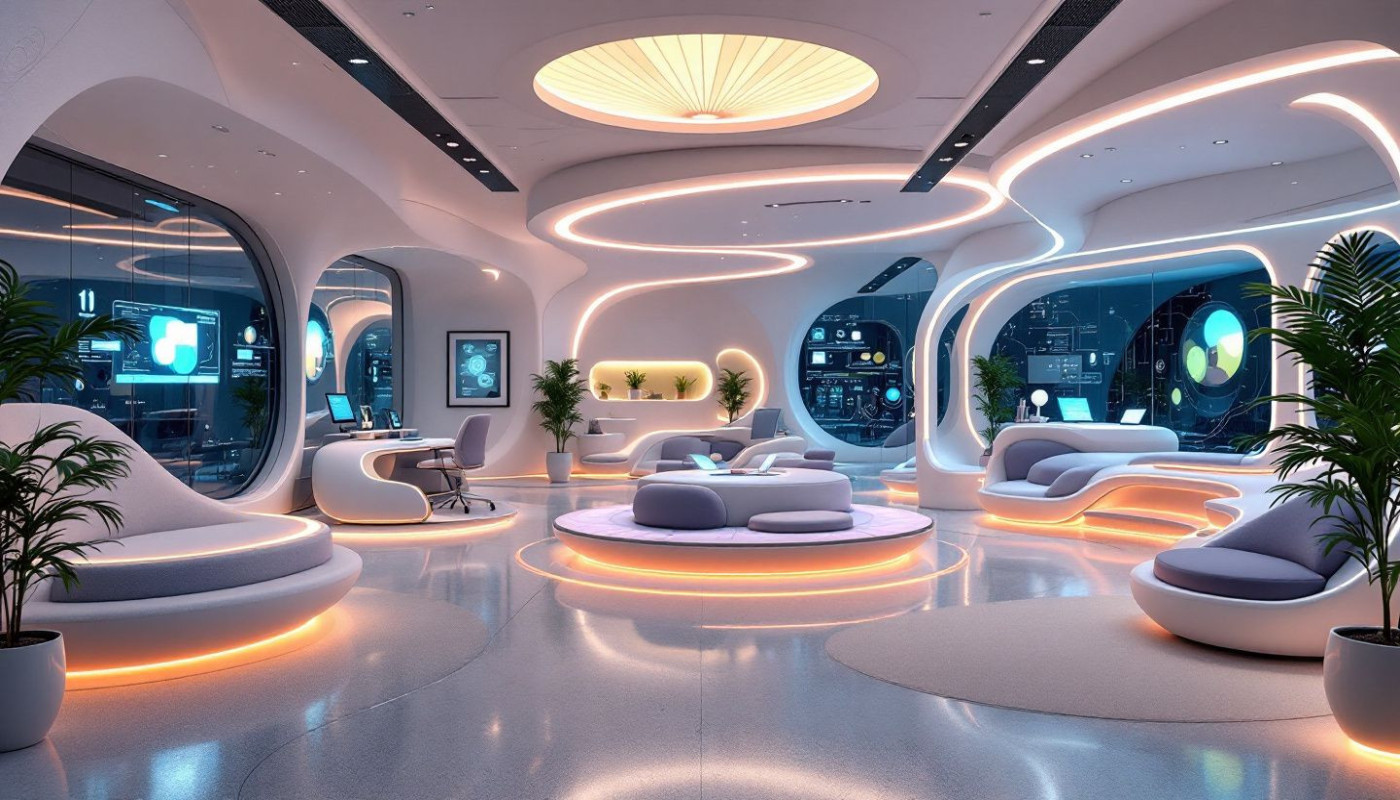Table of contents
As modern work environments continue to evolve, the concept of flexible workspaces has gained widespread attention. These dynamic settings promise not only greater adaptability but also the potential to enhance productivity and well-being. Delve deeper into the fascinating relationship between workspace flexibility and workplace efficiency, and discover how innovative office designs could redefine the way people work and succeed.
The rise of flexible workspaces
Flexible workspace trends have transformed the landscape of modern office design, driven by a convergence of technological advancements, evolving workforce expectations, and the pursuit of more cost-effective business solutions. Advances in cloud computing, high-speed internet, and digital collaboration tools have enabled organizations to support employees working from multiple locations, untethered from traditional office setups. In parallel, the contemporary workforce increasingly values autonomy and work-life balance, leading businesses to adopt coworking environments and agile workspaces that offer adaptability to individual and team needs. This shift toward flexibility is also supported by companies seeking to optimize real estate costs and scale operations efficiently, responding swiftly to market fluctuations.
Workplace evolution has introduced the concept of activity-based working, a technical framework that segments office space into distinct zones optimized for different tasks, such as quiet areas for focused work, collaborative hubs for teamwork, and informal lounges for social interaction. This design philosophy not only attracts top talent but also enhances employee satisfaction and productivity by aligning work settings with specific job requirements. As more organizations recognize the strategic value of flexible workspaces in fostering innovation and retaining talent, the trend continues to grow, shaping the future of the modern work environment. The popularity of coworking environments and agile workspaces underscores the broader cultural and economic shift redefining where and how work gets done.
Productivity in dynamic environments
Flexible workspaces have transformed the way organizations approach workspace productivity by encouraging adaptable environments that cater to diverse working styles. When employees are empowered to choose where and how they work—whether through hot desking, quiet zones, or open collaboration spaces—they experience increased autonomy, leading to higher employee engagement. This adaptability allows individuals to select the setting that best matches their immediate tasks, promoting focus for solo work and easy transitions to group activities, thereby enhancing workplace satisfaction. The psychological benefits are notable, as the ability to move between different spaces helps lower stress levels and supports mental well-being, making employees feel more valued and in control of their work environment.
On a practical level, flexible work benefits extend to facilitating spontaneous collaboration and knowledge sharing, which are fundamental drivers of innovation. Collaboration spaces designed for team interaction foster creativity and strengthen professional relationships, while the option for modular or adjustable layouts supports rapid response to evolving project requirements. Such environments can mitigate the monotony often associated with traditional office settings, further boosting employee engagement. When organizations invest in dynamic workspaces that combine practical functionality with psychological comfort, the direct outcome is improved workspace productivity, with employees demonstrating greater motivation, job satisfaction, and commitment to organizational goals.
Design elements that drive success
Workspace design plays a pivotal role in boosting productivity within flexible offices. Incorporating biophilic design principles, such as maximizing natural lighting and integrating indoor greenery, fosters employee well-being and concentration. Natural light not only reduces eye strain but also has a proven positive effect on mood and alertness. Office layout should prioritize zones for individual focus, collaborative interaction, and informal relaxation, ensuring employees can transition between tasks with minimal friction. Ergonomic workspace features—like adjustable desks, supportive chairs, and adaptable monitor stands—help prevent discomfort and fatigue, allowing people to remain engaged for longer periods.
Technology integration is indispensable in productive environments, enabling seamless communication, virtual collaboration, and efficient access to resources. Smart meeting rooms equipped with video conferencing, wireless charging stations, and intuitive booking systems help streamline daily routines. A well-designed office balances openness and privacy through acoustic solutions and modular partitions, supporting both teamwork and deep work. Those seeking inspiration for effective office layouts can review the Best coworking spaces in New York, which exemplify how thoughtful design and advanced amenities contribute to high-performing and adaptable workspaces.
Challenges and solutions for businesses
Companies considering flexible workspaces often encounter a range of flexible workspace challenges, particularly in areas like workspace privacy, workplace communication, and policy consistency. One major concern is how to maintain privacy and confidentiality in shared or open environments, as sensitive discussions or data may be exposed to unintended audiences. Developing clear office policy guidelines regarding the use of private meeting rooms, secure storage options, and digital security protocols can help mitigate these risks. Effective workplace communication is another common obstacle; without designated desks or set teams, information silos may develop or messages can be lost. Adopting digital collaboration platforms and establishing regular touchpoints through virtual or in-person meetings ensures everyone stays informed and engaged.
Change management plays a pivotal role in addressing these hurdles, as the transition to flexible workspaces often meets resistance from staff accustomed to traditional office layouts. Transparent communication about the benefits and expectations, coupled with ongoing training and opportunities for feedback, builds trust and encourages adaptation. Consistency in office policy is also key; businesses should formalize guidelines on workspace usage, remote work eligibility, and expectations for availability. By proactively tackling these flexible workspace challenges with clear policies and strategic communication, organizations can create environments that foster both productivity and employee satisfaction while minimizing disruption.
The future of workspaces
Flexible workspaces are poised to redefine the future of work by seamlessly blending workspace innovation with evolving remote work trends. As businesses increasingly adopt hybrid models, the demand for adaptable environments will accelerate, supporting higher productivity and employee satisfaction. Sustainability will take center stage, driving the rise of the sustainable office through eco-friendly materials, energy-efficient systems, and a focus on wellness-centric design. Companies are expected to integrate biophilic elements and smart technologies that monitor resource consumption, aligning workspace innovation with environmental responsibility.
Digital transformation will remain a driving force in shaping the digital workplace, enabling seamless collaboration across distributed teams and empowering agile responses to market shifts. The future of work will also see advanced analytics, cloud platforms, and immersive communication tools become standard features, fostering a culture of continuous innovation. As organizations prioritize both flexibility and sustainability, flexible workspaces will not only boost productivity but also support a resilient, future-ready workforce, ensuring competitiveness in an increasingly digital and environmentally conscious world.
Similar articles






